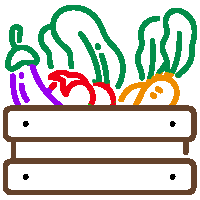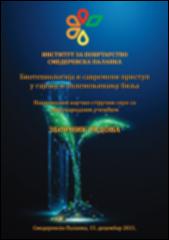Приказ основних података о документу
Утицај интензитета светлости на принос, састав и антимикробну активност етарских уља лековитих биљака
Effects of light intensity on yield, compositions and antimicrobial activitiesof essential oils from medical herbs
| dc.creator | Илић, Зоран | |
| dc.creator | Миленковић, Лидија | |
| dc.creator | Шунић, Љубомир | |
| dc.creator | Станојевић, Љиљана | |
| dc.creator | Цветковић, Драган | |
| dc.creator | Станојевић, Јелена | |
| dc.creator | Даниловић, Бојана | |
| dc.date.accessioned | 2021-12-10T11:59:47Z | |
| dc.date.available | 2021-12-10T11:59:47Z | |
| dc.date.issued | 2021 | |
| dc.identifier.isbn | 978-86-89177-03-9 | |
| dc.identifier.uri | http://RIVeC.institut-palanka.rs/handle/123456789/452 | |
| dc.description.abstract | Tимијан, мајоран, матичњак, нана, и босиљак су коришћени у утврђивању да ли модификoвана светлост услед сенчења биљака, може да утиче на принос, састав и антимикробну активност етарских уља. Принос уља је варирао од 0.02 до 2.57% у зависности од биљне врсте и сенчења. Гасном хроматографијом-масеном спектрометријом (GC-MS), идентификован је велики број компоненти, а доминантне су терпинен-4-ol (7.44-7.63%) у мајорану; тимол (8.05-9.35%) у тимијану; гераниал (Е-Цитрал) 6.84-7.78% у матичњаку; пиперитенон оксид (14.0-12.0%) у менти и линалол (9.06-10.20%) у босиљку. Антимикробна својства етарских уља првенствено зависe од биљне врсте, док је утицај сенчења знатно мање изражен. Резултати указују да су етарска уља тимијана најактивнија против свих изолата са распоном инхибиторних зона између 22 и 56 mm. Зона инхибиције микроба је код тимијана највећа у случају Candida albicans. Маjoран показује најизраженију инхибицију у случају Pseudomonas aeruginosa. | sr |
| dc.description.abstract | Тhyme, marjoram, lemon balm, mint, and sweet basil were used to determine whether light modification by shaded plants could improve antimicrobial activity of essential oils (EОs). The yield of oils were varied from 0.02 to 2.57% depends of plant species and shading. A large number of components have been identified by gas chromatography-mass spectrometry (GC-MS), and the dominant compounds were included terpinen-4-ol (7.44-7.63%) in marjoram; thymol (8.05-9.35%) in thyme; geranial (E-Citral) 6.84-7.78%in lemon balm; piperitenone oxide (14.0- 12.0%) in mint; and linalool (9.06-10.20%) in basil plant. Inhibition zone is dependent primarily on medicinal plant and the influence of shading is much less expressed. The results revealed that EOs from Thymus vulgaris L. proved most active against all isolates with inhibitory zone range between 22 and 56 mm. Microbial inhibition zone is in the case of thyme largest in the case of Candida albicans. Marjoram exhibits the most expressed inhibition in the case of Pseudomonas aeruginosa. | sr |
| dc.language.iso | sr | sr |
| dc.publisher | Смедеревска Паланка : Институт за повртарство | sr |
| dc.relation | info:eu-repo/grantAgreement/MESTD/inst-2020/200133/RS// | sr |
| dc.rights | openAccess | sr |
| dc.rights.uri | https://creativecommons.org/licenses/by/4.0/ | |
| dc.source | Биотехнологија и савремени приступ у гајењу и оплемењивању биља, научно-стручни скуп са међународним учешћем, Зборник радова, Смедеревска Паланка, 15. децембар | sr |
| dc.subject | Lamiaceae | sr |
| dc.subject | сенчење | sr |
| dc.subject | етарска уља | sr |
| dc.subject | антимикробна активност | sr |
| dc.subject | Lamiaceae | sr |
| dc.subject | shading | sr |
| dc.subject | essential oils | sr |
| dc.subject | antimicrobial activity | sr |
| dc.title | Утицај интензитета светлости на принос, састав и антимикробну активност етарских уља лековитих биљака | sr |
| dc.title | Effects of light intensity on yield, compositions and antimicrobial activitiesof essential oils from medical herbs | sr |
| dc.type | conferenceObject | sr |
| dc.rights.license | BY | sr |
| dc.citation.epage | 335 | |
| dc.citation.spage | 325 | |
| dc.identifier.fulltext | http://RIVeC.institut-palanka.rs/bitstream/id/1202/bitstream_1202.pdf | |
| dc.identifier.rcub | https://hdl.handle.net/21.15107/rcub_rivec_452 | |
| dc.type.version | publishedVersion | sr |


